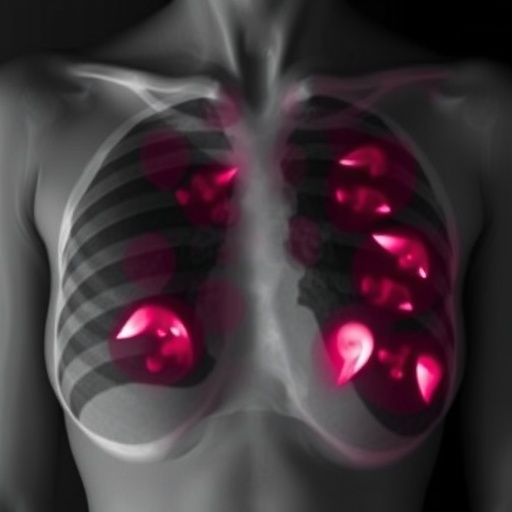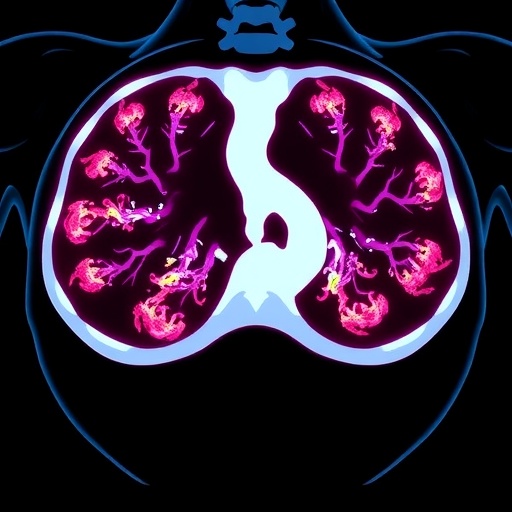
In a pioneering comparative investigation published in BMC Cancer, researchers have unveiled striking disparities in breast cancer diagnosis and tumor characteristics between young patients in Ethiopia and Sweden. This carefully designed cross-sectional study brings to light the stark reality faced by patients in a low-income sub-Saharan African nation relative to those in a high-income European country, underscoring global inequities in cancer detection and management.
Breast cancer remains a global health challenge, but its epidemiological patterns and outcomes vary dramatically across regions. In sub-Saharan Africa (SSA), breast cancer tends to afflict younger patients who often present with more advanced disease stages, a trend less pronounced in wealthier countries with established screening programs. This new research zeroes in on young women under 40 and men of all ages living with breast cancer in Addis Ababa and Stockholm, offering invaluable insights into how stage at diagnosis and tumor biology differ by geography and healthcare infrastructure.
The investigators recruited two cohorts of 100 participants each. The Ethiopian group was enrolled prospectively at Tikur Anbessa Specialized Hospital, Ethiopia’s premier oncology center, whereas the Swedish cohort was retrospectively identified from Södersjukhuset, an oncology hub in Stockholm. By focusing on participants typically excluded from routine mammography screening—women younger than 40 and all males—the study probes a patient population that often remains understudied yet carries significant clinical importance.
.adsslot_1cypOQKNG3{width:728px !important;height:90px !important;}
@media(max-width:1199px){ .adsslot_1cypOQKNG3{width:468px !important;height:60px !important;}
}
@media(max-width:767px){ .adsslot_1cypOQKNG3{width:320px !important;height:50px !important;}
}
ADVERTISEMENT
Among the most revealing findings was the marked difference in cancer stage at diagnosis. In Ethiopia, only 3.3% of patients were diagnosed at the earliest stage I, compared to 27% in Sweden. Conversely, a staggering 44.6% of Ethiopian patients presented with stage III disease, almost double the 23% observed in Sweden. Late-stage (stage IV) diagnoses also disproportionately affected Ethiopian patients, comprising 18.5% of cases versus a mere 5% in their Swedish counterparts. These figures highlight the ongoing challenges in early breast cancer detection in resource-limited settings.
The study further reported a statistically significant disparity in tumor stage distribution between the two groups, reinforcing that geography profoundly influences breast cancer presentation. While mammography screening programs in Sweden facilitate earlier diagnosis, the absence of such infrastructure in Ethiopia likely contributes to delayed identification, leading to a greater burden of advanced disease.
Tumor biology also exhibited notable differences across cohorts. Despite the disparities in stage, estrogen receptor (ER) positivity was high in both populations, with 79.5% positivity among Ethiopian patients and 69% in the Swedish group. This challenges some preconceived notions that breast cancers in SSA are predominantly triple-negative and aggressive, suggesting that ER-positive tumors are more common than previously believed in Ethiopian patients.
Subtyping further delineated these differences. The ER- and/or progesterone receptor (PgR)-positive and human epidermal growth factor receptor 2 (HER2)-negative subtype dominated in both groups, accounting for 68% of Ethiopian cancers and 47.5% in Sweden. HER2-positive tumors were present in 20.5% of Ethiopian patients and 26.7% of Swedish patients. Interestingly, triple-negative breast cancer, recognized as a particularly aggressive and hard-to-treat subtype, was more prevalent among Swedish patients (25.7%) compared to only 11.5% in Ethiopia.
These findings challenge simplistic assumptions that African breast cancer patients universally present with inherently aggressive tumor biology. Instead, the data suggest that late-stage presentation in Ethiopia may be primarily driven by systemic barriers such as lack of screening, delayed healthcare access, and resource limitations rather than more aggressive tumor subtypes alone.
The gender dynamics embedded within the study also merit attention. Male breast cancer, although rare globally, has been reported with increased prevalence in SSA. Including men of all ages allowed the researchers to capture this disparity and highlight the need for tailored diagnostic strategies addressing men, who are often overlooked in breast cancer research.
From a public health perspective, the results serve as a rallying call for enhanced breast cancer awareness, improved diagnostic services, and the implementation of accessible screening programs in low-income countries like Ethiopia. Early detection saves lives, and without changes to healthcare infrastructure, patients will continue to endure late-stage disease with fewer therapeutic options and poorer prognoses.
Biomedical researchers and clinicians alike will find the study’s cross-continental comparison invaluable. It underscores how socioeconomic status, health system readiness, and cultural factors intertwine to influence clinical outcomes in breast cancer. Future research must delve deeper into understanding how biological, environmental, and social determinants collectively shape disease course in diverse populations.
Clinicians in high-income countries may find these insights instructive when managing immigrant populations or underserved communities who share similar diagnostic challenges as observed in Ethiopia. Conversely, the study advocates for increased global collaboration in oncology, aiming to bridge the knowledge and care divide that persists between countries.
The methodology itself, with the juxtaposition of prospective and retrospective data collection, exemplifies adaptive research strategies that maximize existing resources in disparate settings. This pragmatic approach enables meaningful comparisons and highlights the urgent need for capacity-building in oncology research within SSA.
On a molecular level, the unexpectedly high ER positivity among Ethiopian patients suggests hormone receptor-targeted therapies could be efficacious if afforded timely diagnosis and treatment access. Therapeutic interventions successful in Europe may hold promise for improving survival in Ethiopia, provided systemic hurdles are addressed.
The lower prevalence of triple-negative breast cancer in Ethiopia also raises intriguing questions about genetic, environmental, or lifestyle differences influencing tumor phenotype development. These findings propel the field toward more nuanced models of breast cancer heterogeneity across populations.
Importantly, this study accentuates how epidemiological surveillance must factor in age and gender-specific risk profiles. Tailored public health policies, including male breast cancer awareness and younger women’s risk stratification, are critical steps forward.
Ultimately, this research embodies a vital contribution to global oncology by painting a detailed portrait of young breast cancer patients’ experiences across continents. It galvanizes the oncology community to refine strategies that not only enhance detection and treatment but also embrace equity and inclusiveness, ensuring that vulnerable groups receive timely, effective care.
As breast cancer incidence rises worldwide, the lessons gleaned from Ethiopia and Sweden underscore the imperative to transcend economic divides and dismantle barriers undermining early diagnosis. Only through sustained international efforts can outcomes be equalized, and the global breast cancer burden meaningfully reduced.
Subject of Research: Breast cancer stage at diagnosis and tumor characteristics among young women and men in Ethiopia and Sweden.
Article Title: Stage at diagnosis and tumor characteristics among young women and men with breast cancer, in Ethiopia and Sweden, a descriptive cross-sectional study.
Article References:
Ekdahl Hjelm, T., Gebremariam, T.Y., Weldearegay, M.F. et al. Stage at diagnosis and tumor characteristics among young women and men with breast cancer, in Ethiopia and Sweden, a descriptive cross-sectional study. BMC Cancer 25, 1222 (2025). https://doi.org/10.1186/s12885-025-14614-x
Image Credits: Scienmag.com
DOI: https://doi.org/10.1186/s12885-025-14614-x
Tags: advanced breast cancer stages in young womenbreast cancer diagnosis disparitiesbreast cancer epidemiology in low-income countriesbreast cancer screening challengescomparative cancer studies Sweden Ethiopiaglobal health inequities in cancerhealthcare infrastructure and cancer outcomesoncology research in Addis Ababasub-Saharan Africa breast cancer trendstumor characteristics by geographyyoung adults and cancer diagnosisyoung breast cancer patients Ethiopia Sweden






